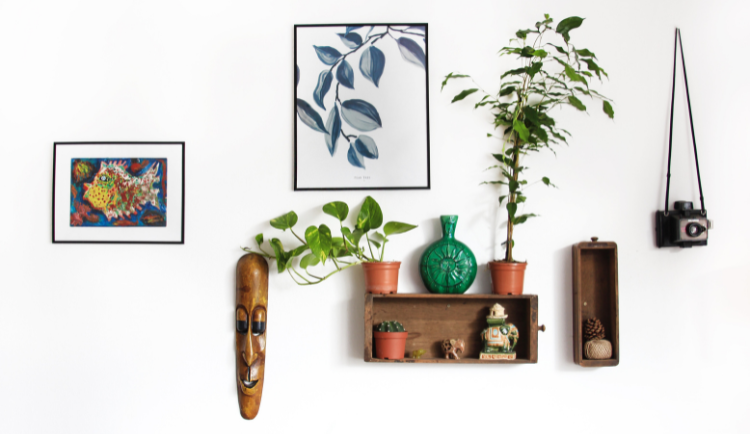Yes, Tacos Can Brighten Up Your Day
When it comes to foods that make you happy, I bet it doesn’t take long for tacos to make your short list. According to a survey conducted by OnePoll (commissioned by the meal kit delivery service HelloFresh), researchers asked participants about the foods that can instantly brighten up their day. Tacos topped the list, followed by the breakfast staple of bacon and eggs, and steak. That’s high praise for the traditional comfort food that originated from our neighbors to the south.
October 4th is National Taco Day and Yelp—the website and app that lets users sound off on local businesses with reviews, photos and other information—recently released its Top 100 Taco Spots in the US. Depending on where you live in the country, from Texas to California, the choices for a good local taco joint are abundant, such as Mami Coco in Dallas or Taco Nazos in L.A. But this list proves you don’t have to live closer to the border to still get a good taco. According to the Yelp, you can find some of the best local taco spots in unconventional places, including Shaka Tacoz in Hawaii, Los Tacos No. 1 in New York and Deckhand Dave’s Fish Tacos Alaska.
Yelp is also offering a $20,000 sweepstakes to users who love tacos and support local businesses. When the winner of the first-ever Taco Trailblazer award is chosen, they will then embark on the Yelp Taco Trail and visit some of those Top 100 Taco Spots in the United States and document their journey on the site.
Whether it’s the simplicity, versatility, convenience or they just plain taste great, tacos seem to offer much more to the soul than just sustenance, but we’ll leave that to the food experts to figure out. We’ll just continue to put smiles on our faces with a visit to the local taco shop.
Here are the some of the Top Taco Spots in the United States according to Yelp!:
Fernandez Restaurant - San Diego
Taco Nazo – Bellflower - Los Angeles
Taqueria Mi Ranchito - Los Angeles
Granny's Tacos – Austin
Los Tacos No.1 - New York
Tacos Sinaloa - San Francisco
El Primo Tacos - Los Angeles
Bajamar Seafood & Tacos - Las Vegas
Shaka Tacoz - Hawaii
Mami Coco - Dallas
De Cabeza - San Diego
Deckhand Dave's Fish Tacos - Alaska
Jazzy's Kitchen - Hawaii
Taqueria El Asador – Pensacola
Mariscos Mi Gusto Es - San Diego
Street Tacos and Grill - Los Angeles
Tacos Jalisco – Key Largo
Tranky's Tacos - Dallas
El Chile Toreado - Santa Fe
Birrieria Little Tijuana - Los Angeles/Riverside
Cocina Madrigal - Phoenix
Edgewater Tacos - Chicago
Chicali Tacos - Las Vegas
Tacos Aya Yay - Denver
La Bamba Mexican Grill Restaurant - Phoenix
Taqueria Pollo Asado - Seattle
Tlaolli - Indiana
Del Seoul - Chicago
Str8 Up Tacos - Los Angeles
Porque No? Tacos - San Francisco
Kiss Pollos Estilo Sinaloa - Phoenix
Guerra's Krazy Taco - Ohio
Tacos Del Chavo - Atlanta
SoyMexican Veggie-Vegan Eatery - Las Vegas
Frogtowns Gourmet Tacos - Los Angeles
El Gallo Giro Taco Truck - San Francisco
Xicamiti La Taquería Bistro - Denver
Tacos La Pasadita - Utah
Dos Mundos - Portland
Tacos Y Mariscos Las Islitas - Hawaii
Tacos El Gordo - San Diego
TaquerEATa - Hawaii
Tacos Los Panchos - Utah
Tacos El Chilango Food Truck - Virginia
Fish Company Taco - Galveston
TACO-BOOK Taqueria - Seattle
Benny's Tacos & Rotisserie Chicken - Westchester – Los Angeles
Taqueria La Loma - Ohio
Tres Amigos - Arizona
Birria & Barbacoa de chivo Los Compadre's - Louisiana
Sangria On the Burg - San Antonio
Tacotarian - Las Vegas
Antojitos Izcalli - Alabama
Cuantos Tacos – Austin
Birria Landia Williamsburg - New York
Taqueria Nuevo Leon – Carrollton
Los Mariscos - New York
Sabrina's West Street Kitchen - Reno
Xochi - Seattle
Taqueria El Amigo - Boston
Maciel's Tortas and Tacos - Memphis
El Super Taco – Phoenix
Los Agavez Taqueria - Ohio
La Lupita Taco Restaurant – Houston
Los Bocados – Parkland, Florida
Titas Taco House – Humble, Texas
Just Tacos and More - Phoenix
Chris' Ice Cream - Indianapolis
Chino Loco Taqueria - Michigan
Lolis Mexican Cravings - Tampa
El Cuate - Oregon
La Cocina Mexican Street Food - Utah
Taco Culture Taco Shop Arizona - Phoenix
Tacos Nayarit - South Carolina
Arun’s Indian Kitchen & Taco Masala – Lauderhill, Florida
Slope & Hatch - Colorado
La Calle Taqueria Y Carnitas - Colorado
El Taco Feliz - Hawaii
Yellow City Street Food - Amarillo
Forastero - Chicago
Acevedos Hawaicano Café - Hawaii
Lane's Quickie Tacos - Arkansas
143 Street Tacos - Arizona
Tacos Doña Lena - Houston
The Taco King – Houston
La Plaza Supermarket - Ohio
Nanys Tacos - Arizona
J Zapata - Pennsylvania
Cafe Nube - New York
Flavia's Kitchen – Austin
Taco Bamba - Virginia
Tacos Pihuamo - Oregon
Taco El Chingon - NY State
Cinco De mayo Taqueria – Spring, Texas
Quesabirria Jalisco Tacos - Chicago
Las Palmas - Pennsylvania
Dos Hermanos Taco Truck - Alabama
El Paisa - New Mexico
Alegria Tacos – Oakland Park, Florida
La Reforma Brewery - New Mexico
Read More









